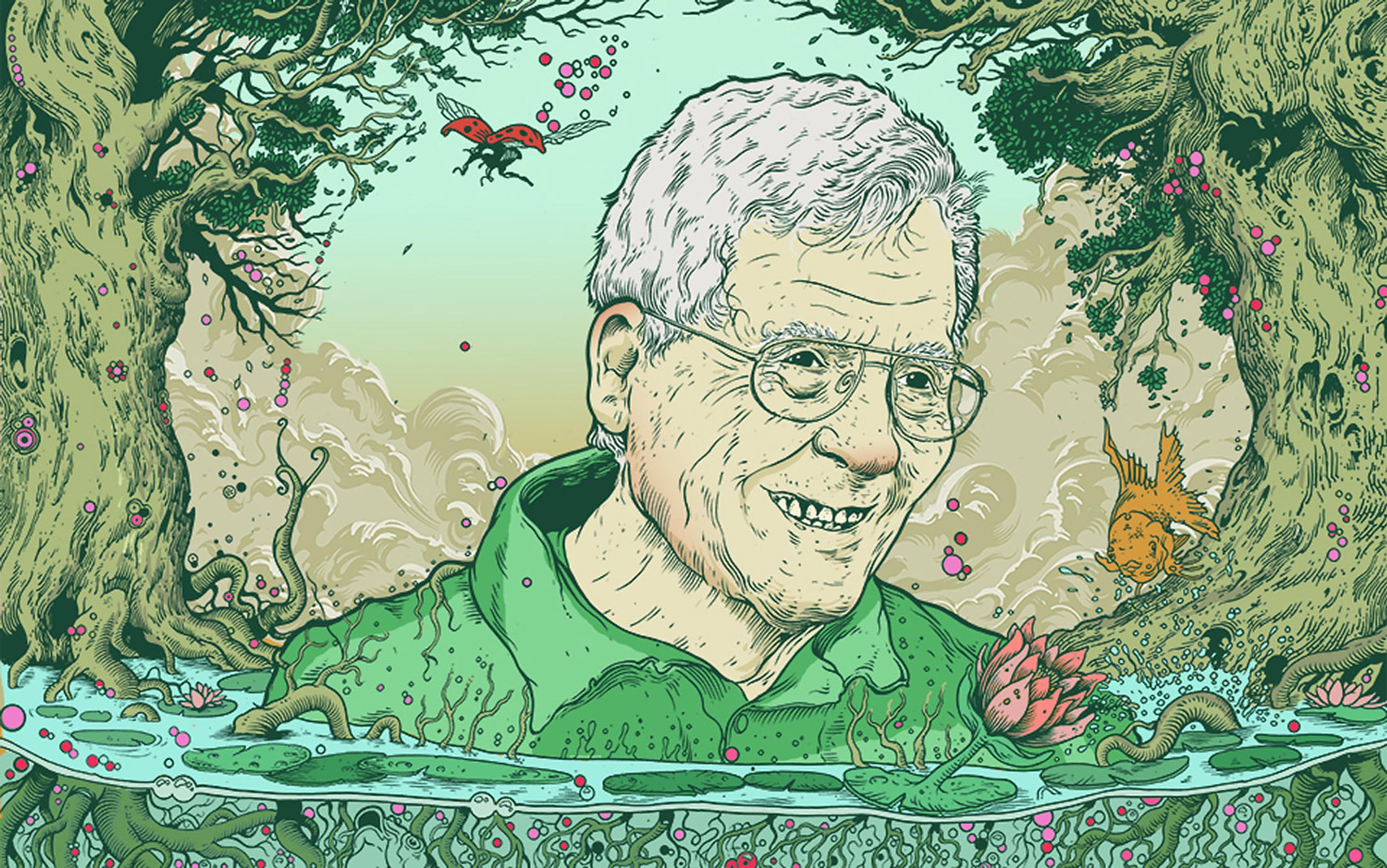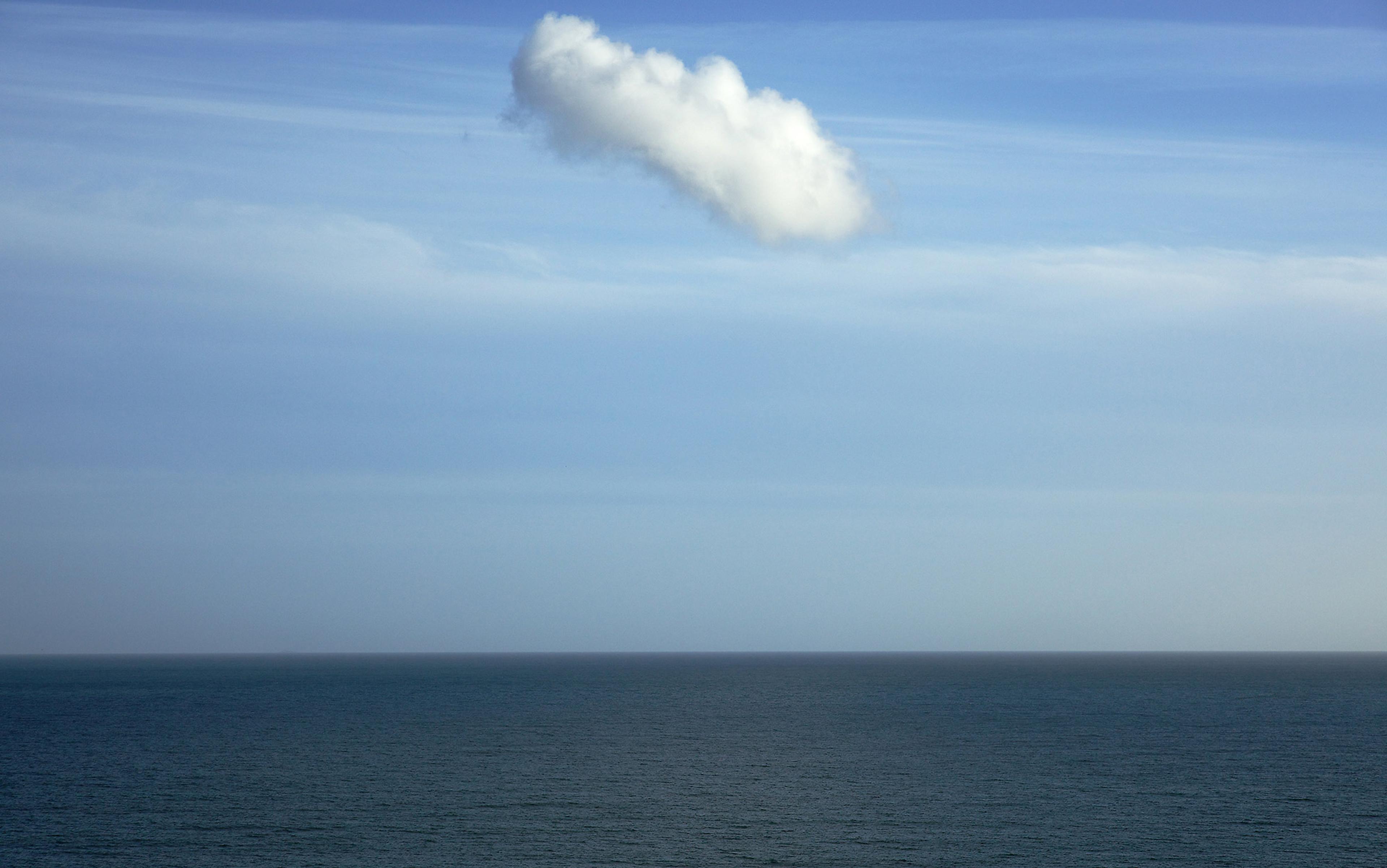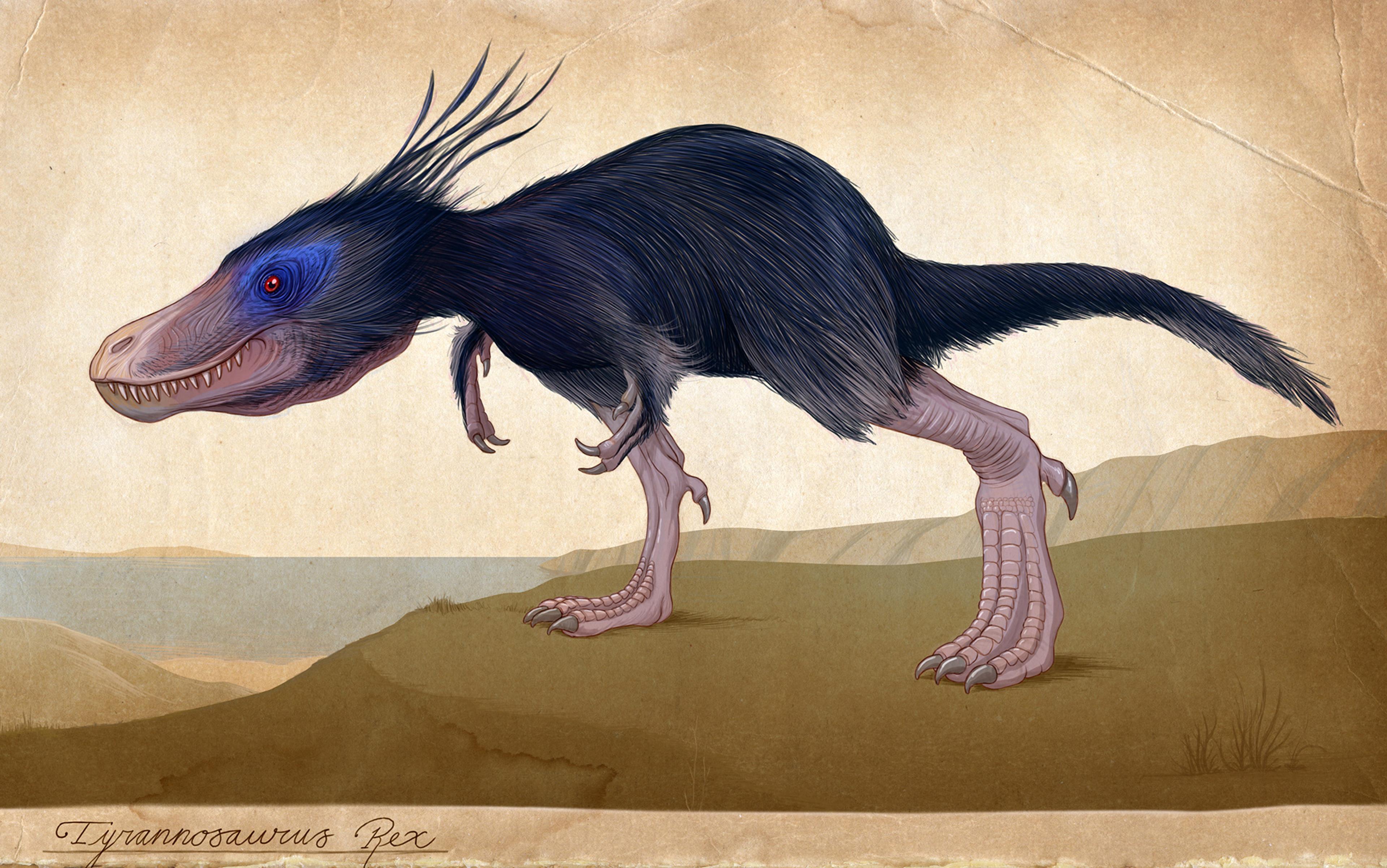The inventor James Lovelock was born in England in 1919. Early during the Second World War, armed with a degree in chemistry, he went to work for the British government on a variety of projects on the borderline between the physical and the biological sciences. He had an incredible ability to make gadgets from piles of old junk, often surplus to the military effort, and this continued after the war. His greatest triumph was to invent the electron capture detector, an instrument so accurate that if one spilt a solvent on a rag in Japan, one could detect it in Britain a week later. Naturally, a man with such talents attracted attention. Lovelock went freelance and in the early 1960s he was often in California aiding one of his clients, the American space agency NASA, which was just then trying to detect if there was life on Mars.
Lovelock approached the problem indirectly, arguing that there was no need to send rockets to the red planet, but this wasn’t necessarily a welcome conclusion for those invested in space travel. He argued that simply looking at the atmospheric composition of a planet would enable us to know whether that planet was likely to support life. Mars, Lovelock said, had no life, but Earth obviously was very different. This led to his great insight. The Earth is not just teeming with life. The Earth, in some sense, is life. Earth is an organism!
In the mid-1960s, Lovelock returned to the somewhat isolated village in the south of England, where he lived, undisturbed, with his family. Here he talked things over with his one close friend, the novelist William Golding, a man who likewise sought solitude, especially since the success of his first novel, The Lord of the Flies (1954). It was Golding who gave a name to Lovelock’s insight, suggesting that it be called Gaia, after the ancient Greek goddess of Earth. But Golding did more than just give the idea a name. For the next few years, as Lovelock extended his thinking on the subject, Golding encouraged and helped the scientist to explore his hypothesis. This came naturally. Since his youth, Golding had been an enthusiast for the thinking of the polymath and mystic Rudolf Steiner. Steiner, who is best known today as the founder of the Waldorf (or Steiner) school system, which emphasises the role of the imagination in learning, had some very odd ideas (many derived from the theosophists) about heavenly spirits and reincarnation, all bound up with an idealistic philosophy that sees life throbbing everywhere. Hence, absolutely central to Steiner’s thought, was the view that Earth is living, it is an organism.
Lovelock did send one of his sons to a Steiner school, apparently without embracing the metaphysics of the Steiner system. Nonetheless, in Golding he found a sympathetic listener who was, in any case, primed, from his longstanding interest in Steiner’s philosophy, to hear that Earth was a living thing.
Just as a human sweats and shivers as the temperature changes, so the living Earth adjusts its gaseous mantle to accommodate its temperature changes
Lovelock went public with Gaia in the early 1970s. By then, he had found the right collaborator from within mainstream science. As it happens, the American microbiologist Lynn Margulis never much cared for the Gaia idea as such, but from her undergraduate years onwards (which started at the precocious age of 14) she was a fervent believer in symbiosis, the idea of organisms coming together for mutual benefit. In fact, she had in 1967 published a major work on the topic, something that was eventually to give her respect and fame in the scientific community. Margulis argued that complex cells (eukaryotes) were formed by more primitive cells (prokaryotes) swallowing up other simple cells. These simple cells, she argued, became functional parts (organelles) of their now more complex hosts. Among the parts that had prokaryotic origins, Margulis highlighted the mitochondria — the power plants of cells — and the chloroplasts — the parts of plant cells that perform photosynthesis. For someone thinking this way, the idea of Earth as an integrated functioning entity was virtually a premise not a deduction, and soon Margulis was collaborating with Lovelock on a series of papers arguing for Gaia.
Lovelock and Margulis staked Gaia on the dog that barked in the night, or rather on the planet that should have heated up. In the lifetime of Earth, about four and a half billion years, the heat from the Sun (thanks to the nature of radioactive decay) has risen sharply. And yet the dog did not bark. The temperature of Earth has not risen in tandem. Rather, it has stayed more or less stable, just what is needed to support life. Lovelock and Margulis offered a number of reasons for this independence from the Sun’s influence. One of their most important arguments was that life itself — the planet’s entire biota — changes the composition of the gases on Earth and in so doing, moderates and steadies the effects of the Sun’s heat. This is the ‘greenhouse effect’, whereby the planet’s gases trap the Sun’s heat and release it out to space at different rates according to the different compositions of the atmosphere. Just as a human sweats and shivers as the temperature changes, so the living Earth adjusts its gaseous mantle to accommodate its temperature changes.
There was not much reaction to these papers, and by the mid-1970s, Margulis moved on to other interests, although she remained sympathetic to Gaia until the end of her life. Lovelock persisted and increasingly took his case into the public arena. This climaxed in 1979 with the publication of his book, Gaia: A New Look at Life on Earth. After that, as he says in his autobiography, things changed overnight, and from that day to this Lovelock has never left the public eye. A flood of letters started to appear in his mailbox, and they have continued ever since (albeit now in electronic form). But the reaction from the world of mainstream science was altogether less enthusiastic.
On the strength of his prowess as an inventor, in 1974 Lovelock was elected to the Royal Society in London. You don’t get much more scientifically respectable than that. A few years later, in 1983, Margulis was elected to the American equivalent, the National Academy of Sciences. At this point the ‘Matthew Effect’ should have kicked in. That’s what sociologists of science — riffing on the Bible passage about the rich getting richer, while the poor get poorer — call it when eminent scientists are given far more recognition for the same work than their less well-known colleagues.
But in this case, it didn’t happen. Lovelock and Margulis were mocked and scorned by the professional scientists. They were figures of fun and even contempt. Richard Dawkins, author of the bestseller The Selfish Gene (1976), led the baying pack. His objection to the Gaia theory was, not surprisingly, evolutionary. As an ardent opponent of group selection, he could not accept that things could happen for the good of the group simply because they were for the good of the group. Plants don’t produce carbon dioxide, he said, for the sake of the Earth. Either it was a byproduct of their functions, or it must be of immediate benefit to the plants themselves. Any other interpretation was contrary to a Darwinian view of life.
A few years later, John Postgate, a microbiologist and Fellow of the Royal Society, was withering in his critique. Gaia was the biggest pile of nonsense he had ever come across and more than that, it was dangerous. ‘Gaia — the Great Earth Mother! The planetary organism! Am I the only biologist to suffer a nasty twitch, a feeling of unreality, when the media invite me yet again to take it seriously?’ he wrote in a comment piece for New Scientist in April 1988. He continued:
When Lovelock introduced it in 1972, Gaia was an amusing, fanciful name for a familiar concept; today he would have it be a theory, one which tells us that the Earth is a living organism. Will tomorrow bring hordes of militant Gaia activists enforcing some pseudoscientific idiocy on the community, crying ‘There is no God but Gaia and Lovelock is her prophet’? All too easily.
Neither Lovelock nor Margulis were evolutionary biologists nor, for that matter, geologists, paleontologists or academics from other disciplines with an expertise in Earth’s history and overall functioning. He was a chemist, she a microbiologist. For them, the chief feature of life was balance, stability, or what is known as ‘homeostasis’ — that is, the maintaining of balance through dynamic interacting processes. Earth is in homeostasis so it is living. On the other hand, for an evolutionary biologist such as Dawkins, Darwin’s mechanism of natural selection is all-important. Life is produced by natural selection, by the competition between individuals for reproductive success. Evolution has no goal or ‘telos’ of making Earth a better place for life. What is more, as far as Dawkins and other evolutionary biologists were concerned, Earth was not produced by natural selection, and hence it is not itself a living thing. In this sense, the two sides of the fight were simply talking past each other.
People got into Gaia groups. There was a Gaia atlas, Gaia gardening, Gaia herbs, Gaia retreats, Gaia networking
The scientists might have hated Gaia, but the general public loved it. They embraced Lovelock and his hypothesis with enthusiasm. People got into Gaia groups. Churches had Gaia services, sometimes with new music written especially for the occasion. There was a Gaia atlas, Gaia gardening, Gaia herbs, Gaia retreats, Gaia networking, and much more. And the range of enthusiasts was — and still is — broad. At one end of the spectrum was the English philosopher Mary Midgley. Scourge of the sloppy and hater of the condescending and overconfident, she embraced Gaia with enthusiasm and continues to do so to this day. At the other end of the spectrum were a motley crew — the deep ecologists, the ecofeminists, and, especially in California, where Lovelock had first thought of the idea, the pagans.
This last group includes one of my all-time favorites: he started life in St Louis, Missouri in 1942 as Timothy Zell, son of a US Marine, but has since transmogrified into Oberon Zell-Ravenheart. He describes himself as a ‘transpersonal psychologist, metaphysician, naturalist, theologian, shaman, author, artist, sculptor, lecturer, teacher’ and is also ‘an initiate in the Egyptian Church of the Eternal Source’ as well as ‘a Priest in the Fellowship of Isis’. He is the founder of a new religion, the Church of All Worlds, and he even persuaded the Internal Revenue Service to give him the tax exemptions given to regular religions. Although long married to Morning Glory Zell-Ravenheart (born Diana Moore), he is (or was when younger) an enthusiastic practitioner of polyamory, ‘responsible and consensual non-monogamy’. Finally, he is a man who independently of Lovelock hit on the Gaia idea, something he initially called Terrabios. But, willing to accept the priority of a fellow traveler, Zell-Ravenheart now preaches Lovelockian Gaia to all who will listen. (Pagans, like many small groups, are pretty adept technologically, and it is they who are responsible for much of the internet interest and advertising.)
Gaia theory: hated by the scientists, loved by the public. This is a paradox with a deep history: let’s pull back and try to make sense of it.
To do this we need to go to the first real Gaia enthusiast, long before Lovelock, and before Dawkins or any other scientist — to Plato, 400 years before Christ. In Timaeus and in other writings, Plato argues that the whole cosmos is alive and that Earth itself is a living organism, with a circulation system in the form of rivers and lava. As much as the conceptual claim, it is his mode of argument that is interesting and important to us. To use the terminology of his student Aristotle, Plato is arguing for a ‘final cause’. In trying to explicate the nature of Earth, Plato asks always what is the point of everything? This is not so much a question of how Earth came about — although Plato does say that a god-like being, the Demiurge, makes Earth out of already-existing material — but why it was made and for what end. The various elements of the living world and of Earth can be understood not just in their own right, but as contributing to the whole life of the cosmos. In Plato’s opinion, they all serve the greater good of making and supporting a living being.
However ‘final cause’ thinking — known as ‘teleology’ today — came crashing down at the time of the scientific revolution during the 16th and 17th centuries. In came a new mechanical philosophy in which the universe has no purpose. There are no final causes. It is all matter in motion. Hence you cannot look at Earth and ask: ‘What’s the point of it all?’ If you ask: ‘Why do plants produce carbon dioxide?’ you cannot answer: ‘For the benefit — the final cause — of the whole.’ It is true that, even after the scientific revolution, organisms seemed worryingly purposeful, but generally it is thought that Darwin solved that one. Natural selection shows why final causes still seem operative — what is the point of the hand or the eye? — when in fact living things truly have no ultimate end in mind. The hand and the eye have no point other than the ultimately purposeless activity of helping their possessors to survive and reproduce. In the eyes of science, organisms too are simply matter in motion. Dawkins refers to us as ‘survival machines’.
Francis Bacon likened final causes to Vestal Virgins: decorative but barren
This is what really upset the professional scientists about Gaia. It seemed a throwback to the days of final causes. I don’t think that Lovelock really intended to do this — and Margulis, I suspect, really didn’t care that much, although perhaps her retreat from a ‘strong’ Gaia hypothesis was significant — but again and again this is what happened. In both Lovelock’s own writing and in popular accounts of Gaia, everything happens for an end: for the good of planet Earth. In The Ages of Gaia (1988), when Lovelock tries to explain why the sea is not as salty as one might expect, he suggests that Earth sets up lagoons to evaporate the sea so the salt can be removed by earthquakes and so forth — a kind of end-directed, final-cause thinking, as non-mechanical as anything found in Plato or Aristotle. Gaia — the idea that everything works together as a harmonious whole for the good of the whole — is teleological in a way that has been unacceptable since the days of Francis Bacon (who likened final causes to Vestal Virgins: decorative but barren). No wonder the Gaia hypothesis upset scientists.
However, not everyone accepted the new philosophy of the scientific revolution. There were always those who hankered after final causes, after purpose and meaning in nature — most notably the German Romantics, including the poet Goethe, the anatomist Lorenz Oken, and above all the philosopher Friedrich Schelling, who as a teenager in 1794 wrote a lengthy paper on Timaeus. In turn, Schelling was a deep influence for the American transcendentalists, a group of thinkers including Ralph Waldo Emerson and Henry David Thoreau who flourished in New England around the mid-19th century. They took up with enthusiasm the idea of Earth as an organism, and one might almost say that it became an American intellectual tradition, an assumption that underpins much environmentalism in the US. We find it in the writings of the great naturalist John Muir and, in the 20th century, in the thinking of the much-loved Aldo Leopold, author of A Sand Country Almanac (1949) and its famous essay ‘Thinking like a mountain’.
There is good evidence that the American biologist Rachel Carson, who exposed the dangers of the insecticide DDT in her hugely controversial book Silent Spring (1962), was likewise committed to the idea. We do know (from her private letters) that she was much influenced by Steiner’s claims about nature and the importance of an integrated perspective. In the wake of Silent Spring came a host of environmental campaigners, including the deep ecologists and the ecofeminists. Both groups endorse entirely the claim that Earth is an organism. All of these people, from Emerson down to Zell-Ravenheart, hate the Cartesian reduction of the world to cold, unthinking matter in motion. For all of them, things do have a purpose. It might not be the Christian purpose of eternal salvation, but is rather a purpose bound up with our home, Mother Earth. To reject this, they believe, is scientifically stupid and morally pernicious.
The revival of holistic, final-cause thinking fell on fertile soil after the Second World War. The 1960s and ’70s was the time of ecological upheaval and unrest. First Silent Spring, then the growing conflict in Vietnam with ‘our’ side doing such appalling things as defoliating whole forests to destroy cover for the enemy, and finally major oil crises when we realised that we are greedily using the planet for our own ends. Already there were worries about global warming. Gaia was an idea whose time had come. No wonder — coming from acclaimed scientists — it was welcomed as the foundation, the basis, of the way we must all now think. Gaia simply made explicit — and scientifically legitimate — what for many was already a given: that Earth is a living being, in a delicate state of balance and harmony, and we all have a responsibility for her wellbeing.
So why were scientists, especially evolutionary biologists, so keen to distance themselves from Gaia — was it just the whiff of teleology? I think there’s another layer to this. The clue lies in the term ‘pseudo-science’ which critics such as Postgate have used to describe Gaia, and it is an idea with meaning and history. Simply put, it refers to theories and claims that might look like science, but don’t measure up to the standards of ‘proper’ science — they are not predictive, but are inconsistent, powered by external values, and so forth. But, as the American philosopher of science Thomas Kuhn has pointed out, notably in The Structure of Scientific Revolutions (1962), often regular science doesn’t measure up too well, either.
Terms such as pseudo-science are thrown around when scientists themselves are not feeling too secure. A decade ago, I saw this in action in my own university, Florida State, which at the time decided to start a medical school. Along with many others, I opposed it, on the grounds that it would drain funds from the rest of the campus. (We were right!) Then one of the powerful Florida legislators, who is a chiropractor, got the state government to commit a huge amount of money to the medical school to start a department of chiropractic. Our administrators loved the idea — an easy solution to the financial problem. The medical school faculty went crazy, opposing the idea at every step and finally defeating it. Why? Not just because they are against chiropractic — there are practitioners here in town and no one says much about them. But, already insecure in their position as a new school, the medical faculty feared they would be seen as embracing a non-professional, somewhat flaky, area of inquiry. Their reputation would be sunk.
Evolutionary biologists around 1980 were in something of the same bind. There had been major advances in the previous couple of decades but there were huge internal fights as well as external threats: evolution was under fire from the left who accused it of being racist, sexist, and a mere excuse for capitalist ideology, and from the right, who were promoting a biblically based account of origins, with six days of creation, miraculous appearance of Adam and Eve, and soon thereafter a worldwide flood. So when Gaia came bumbling in, promoting a group perspective on natural selection, endorsing (or at least happily presupposing) final causes, and embraced by the kind of man who kept his own harem and got IRS support for his invented religion, it was little wonder that the reaction was just plain nasty. Gaia must go! Postgate again: ‘The ideas underlying Gaia have a proper basis in real science and her acolytes often offer common sense about environmental matters. But, dignified as a “theory” and too often wrapped in mystical, cultish language — “Gaia tells us so-and-so… ” — such revealed wisdom, sound or not, is the antithesis of science.’
What of Gaia today? Perhaps the poet was right, this is the way the world ends, not with a bang but a whimper — although let us hope that neither of those options are too immediate. As science, Gaia never really made it, but it has provoked important scientific work nonetheless. The world as a whole, its homeostasis or lack of it, is interesting, important, and worthy of investigation. Climate change has added huge impetus to systems thinking about the global environment, and this is one reason why in 2006 Lovelock was awarded the Wollaston Medal, the highest award granted by the Geological Society of London. Even if the Gaia theory is not accepted as such, ‘Earth Systems Science’ flourishes.
Perhaps we also have a more relaxed scientific culture now, less anxious in patrolling the boundaries between science and pseudo-science. Deep ecologists, ecofeminists and others do have an important point about the relationship between the human and natural worlds and it is worth addressing. Indeed, we might also be a little more comfortable with a loosened-up culture generally. There are few who have not had the occasional toke, and many have given up condemning (or envying) the pagans, and have themselves had a little more varied sex than our grandparents would have thought proper. It is almost mainstream to agree that even if Gaia is not literally true, it is a metaphor worth cherishing — especially in an age of global environmental uncertainty.
So let us celebrate James Lovelock and Lynn Margulis. Not just as scientists — their very real contributions speak for themselves — but as people with true courage and integrity. They withstood the pressure of fellow scientists turning on them. It would have been easy to drop the whole thing and say that it was a flawed hypothesis — giving themselves credit for being good Popperian scientists. But they knew there was something there that needed explaining and they had the guts to stick with it —Lovelock particularly, but Margulis too. Were they ‘holy fools’? The very friendly, entirely British Lovelock is as far from being a character in a Dostoyevsky novel as I can imagine. But in a sense they were just that, and ultimately science benefits from their thinking. Scientifically respectable or not, the Gaia hypothesis has made our culture richer for its boldness. Fools rush in where angels fear to tread, and sometimes it is better to be a little foolish than to stick to the safe, angelic, path.






